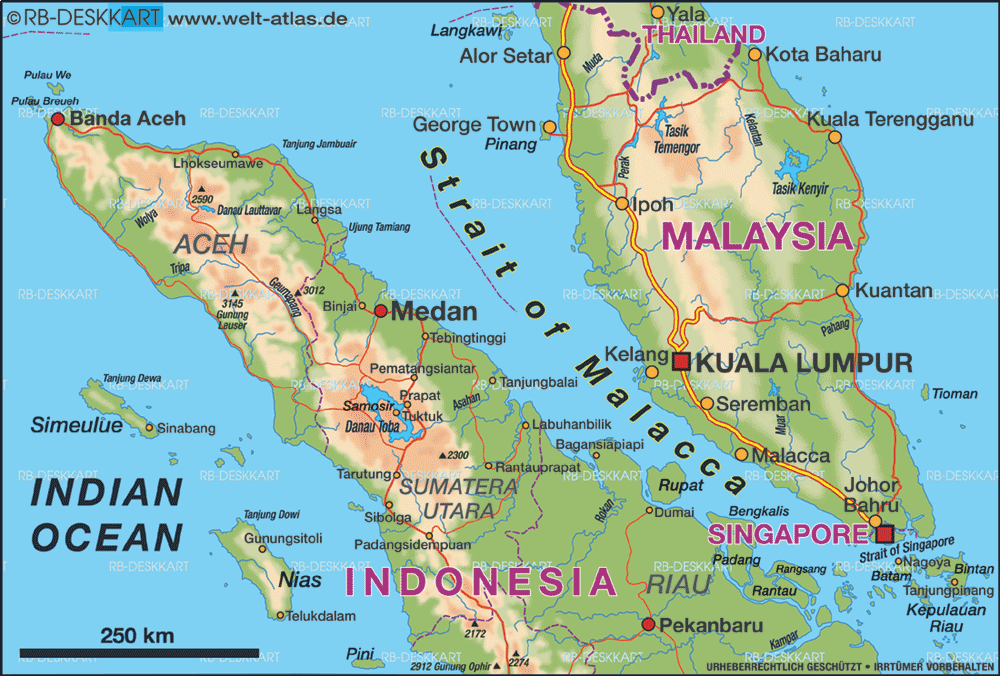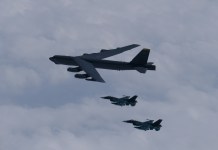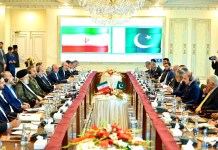Despite China’s unparalleled military superiority and relentless threats to the island nation of Taiwan, it seems highly unlikely that the latter will be another Ukraine. And for this, India can be said to be playing a role too.
It’s A Tractor! Russian MoD ‘Under Fire’ For Bombing John Deere Tractor Instead Of German Leopard MBT
If the United States, India, and to a certain extent, Australia are on the same page, and it seems they are, Beijing will not be that bold and daring to cripple its economy by attacking Taipei. Any such attack makes China extremely vulnerable to countermeasures of countries like India and the United States in the Malacca Strait.
China-Japan ‘TECH WAR’ Will Leave US As The Sole Winner; Beijing Fumes At Tokyo’s Chip Export Restrictions
Because it is through this Strait that China exports its products to its largest market in Europe and imports the crucial raw material, including energy, from the Persian Gulf and Africa.
It is estimated that 80 percent of China’s exports pass through Malacca Strait. In other words, China’s economic destiny is heavily tied to the Strait’s stability.
The Strait of Malacca, across the Indian Ocean, links the South China Sea to the Persian Gulf, the Red Sea, Suez Canal, and the Mediterranean Sea. This east-west sea line of communication happens to be China’s “maritime lifeline.”
A Chinese strategy paper admits it as much when it says that “At present and for a certain period in the future, the main route of China’s maritime transport is from the South China Sea into the Indian Ocean and the Red Sea through the Strait of Malacca.”
And here, China fears that in the event of any invasion of Taiwan, the US, along with its Indo-Pacific partners, can weaponize this essential chokepoint of Malacca by imposing a blockade, resulting in a disruption of trade, energy resources, and raw material flows. This would significantly increase China’s costs in pursuing any misadventure against Taiwan.
It is rightly argued in many quarters that even India may protect its northern frontiers against China’s aggressive designs the best with its ability to disrupt this maritime lifeline of China thousands of miles away. Here, India is said to be having mass and home-field advantage.
India’s military already dominates the northeastern Indian Ocean and the western approaches to the Strait of Malacca. Some experts would like that the US should support India’s efforts to extend its military posture in the Indian Ocean region, including by upgrading its base infrastructure and military equipment.
“With upgraded basing in the Andaman and Nicobar Islands archipelago and bases on Australia’s northern coast and Cocos (Keeling) Islands, the three partners would be better able to host reciprocal visits and, eventually, rotational deployments,” argues Arzan Tarapore, a Research Scholar at Stanford University.
It may be noted here that the Strait of Malacca is an 805-kilometer stretch of water that falls between the Malay Peninsula on the northeast and the Indonesian island of Sumatra on the southwest. It is surrounded by Malaysia, Singapore, and India (Andaman and Nicobar Islands). Of these, Malaysia can be termed neutral from China’s point of view. But Singapore is a US ally, and India is a US partner through Quadrilateral Security Dialogue (QUAD).
What further compounds China’s woes here is that it does not have easy alternatives to Malacca. The nearby Sunda Strait (adjoining Indonesia) is difficult to navigate due to a strong tidal current and a minimum depth of only 20 meters in parts of its northeastern end.
The Lombok/Makassar Strait in the region is a longer route, which can increase shipping costs. That is why it is said that, for now, the Malacca Strait route remains irreplaceable for China.
China’s Troubles
Of course, China has tried to establish direct overland routes to the Indian Ocean to deal with what is said to be its “Malacca dilemma.” This has included tens of billions of dollars in overland infrastructure projects under its so-called Belt Road Initiative (BRI) program, connecting inland Chinese cities to ports in Pakistan (Gwadar) and Myanmar. Unfortunately, these projects with so much promise are far from being fructified.
In Pakistan, the project, falling under what is called the China-Pakistan Economic Corridor (CPEC), has underperformed, embroiled as it has been with instability, lack of security, and corruption. Planned to be worth US$65 billion, this project has seen the investments stalled amidst political and economic issues in Pakistan over corruption, ballooning debts, and fiscal troubles.
Furthermore, Gwadar port, marked by the lack of basic supporting infrastructure, is under constant security threats from the Islamic militants and the separatists in the Balochistan province in which it is located. Besides, Chinese workers and nationals have been attacked physically by the locals.
Similarly, in Myanmar, the so-called China-Myanmar Economic Corridor (CMEC) is supposed to be an extensive infrastructure and energy route directly connecting Kunming and Yunnan to a deep water port at Kyaukphyu on the Bay of Bengal.
However, with Myanmar’s recent military coup and the country edging towards a high-intensity civil war, China’s attempt to bypass Malacca via its southwest is in jeopardy.
Reportedly, Chinese investments have been damaged by the current instability, which casts serious doubt on the project’s security. Chinese officials are complaining to Myanmar’s ruling junta and seeking the military protection of their people and work. In fact, as CMEC snakes through several restive regions, some of whom, like Shan, are fighting for separation, the very feasibility of China’s infrastructure route is at stake.
Perhaps the realization that the BRI is not enough for China to overcome its vulnerability at Malacca has made Beijing chalk out two other strategies. These are China’s overall strategies for realizing its global strategic goals, but it can be argued that these have some implications for Malacca and the adjoining regions, particularly the Middle East, South Asia, and Southeast Asia.
One is Xi Jinping’s Global Security Initiative (GSI) which talks about China’s holistic view of national security. It implies that Chinese willingness to stabilize and support aligned regimes and more openness to mutual military commitments could lead to reliable basing and access in the future.

The idea here is to cultivate core players in the adjoining regions of the Strait of Malacca by expanding China’s security ties with them. If China can build up mutual security commitments, that will weaken the United States’ security partnerships with countries around the Strait and dissuade any move to impose a blockade on the Malacca Strait.
The second Chinese strategy is to establish an extensive China-owned or China-controlled international network of ocean port infrastructures that will work as the dual civilian-military uses to buttress the reach of its armed forces.
Reportedly, as of 2022-end, Chinese firms owned or operated one or more terminals at 36 of the world’s top 100 container ports. Chinese firms have acquired ownership and/or operational stakes in 95 ports in 53 countries, spanning every continent except Antarctica.
Over half of the foreign ports in which a Chinese company has stakes are located along the maritime route running from coastal China through the South China Sea and the Strait of Malacca across the Indian Ocean, linking to the Persian Gulf or channeling through the Red Sea and Suez Canal into the Mediterranean Sea.
Isaac Kardon, a Senior Fellow for China Studies at the Carnegie Endowment for International Peace, and Wendy Leutert, an Assistant Professor at the Hamilton Lugar School of Global and International Studies at Indiana University, point out that “At these Chinese-owned and Chinese-operated facilities, navy ships can replenish specialized petroleum, oils, and lubricants; resupply military materiel, equipment, and personnel; and in some facilities, even undergo maintenance and repair.
“Overseas port facilities likely also augment Beijing’s intelligence capabilities because Chinese terminal operators gain proprietary information about ship movements and trade transactions. These aggregated data are even more valuable when military cargoes and activities in port are monitored.”
They add that with the majority or sole ownership, the Chinese firm’s management can prioritize certain vessels and cargo and determine the availability of fuels, parts, and pier-side equipment.

“From a strategic perspective, full operational control positions the Chinese firm to determine the development of the port complex as a whole, limit or exclude certain vessels from its use, and even support naval operations at the expense of commercial activity. Exact concession terms are closely held and vary widely across jurisdictions, but such control generally confers significant discretion over day-to-day facility use,” they argue.
Of course, during war times, it is quite possible that the host countries may not take sides and limit China’s role in the ports in their territories. After all, the host countries in the Indo-Pacific also have good relations with the United States and would not give up neutrality during wartime to side with China. This is also true of Pakistan, though its bonds with China are “unbreakable.”
However, in the ultimate analysis, though the peacetime military power that PLA navy vessels project through China’s global port network is undeniable, the fact remains that China, unlike the US, does not have any ally or partner to come to its rescue or support if the US or for that matter India does impose a naval blockade against Chinese ships across the Malacca.
And this seems to be the best guarantee for Taiwan’s survival and against a full-fledged war with India.
- Author and veteran journalist Prakash Nanda has been commenting on politics, foreign policy, on strategic affairs for nearly three decades. A former National Fellow of the Indian Council for Historical Research and recipient of the Seoul Peace Prize Scholarship, he is also a Distinguished Fellow at the Institute of Peace and Conflict Studies. VIEWS PERSONAL OF THE AUTHOR
- CONTACT: prakash.nanda (at) hotmail.com
- Follow EurAsian Times on Google News





